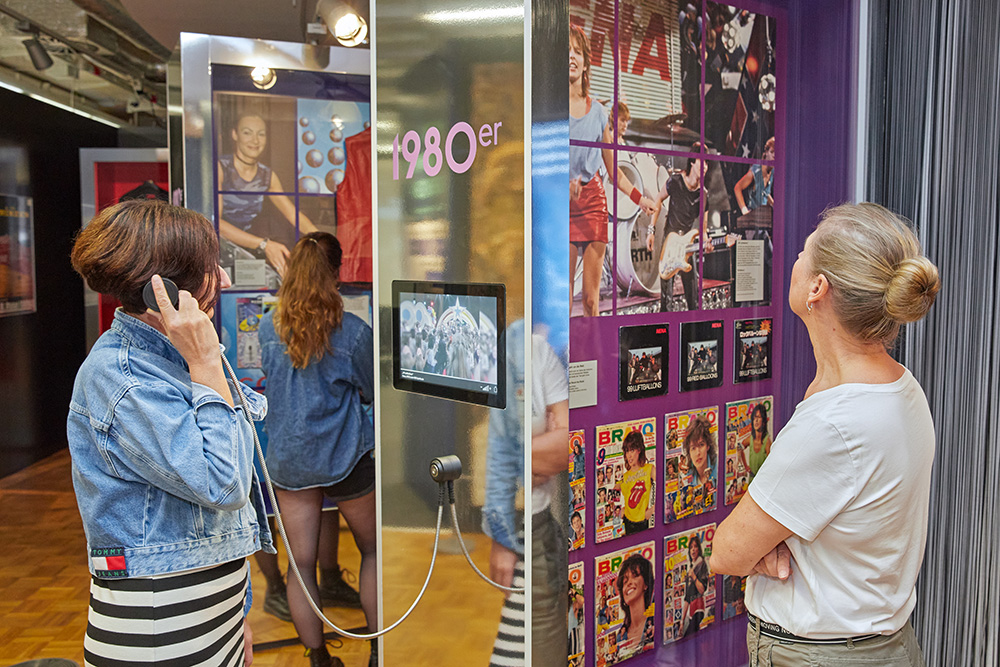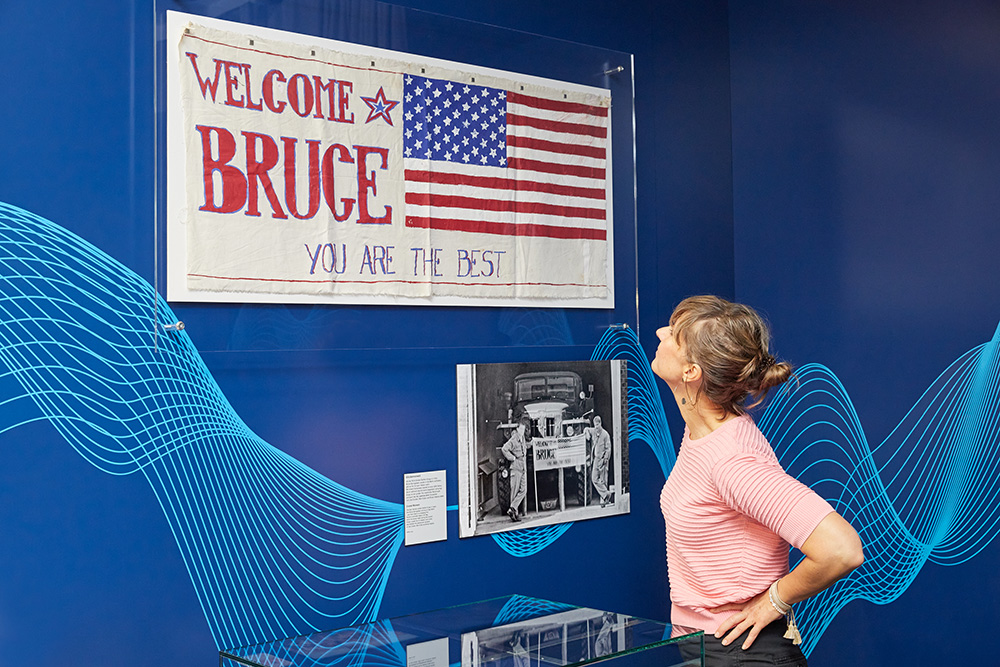
Rock musician Bruce Springsteen picks up his guitar - and more than 160,000 people at the Berlin-Weißensee racecourse erupt in enthusiastic cheers. It was the biggest concert event in the history of the GDR - and it was also politically charged. Because Springsteen has prepared a speech: "It's good to be in East Berlin. I'm not here for or against any government. I've come to play rock'n'roll for you, for you East Berliners, in the hope that one day all barriers will be torn down." Around 16 months later, the Berlin Wall did fall. Some say Springsteen contributed to this with his concert.
Experiencing music that changed history: You can only do that if you are there - or at our museum. Our exhibition makes music tangible. Experience concerts that have influenced German-German history: Large screens all around, glistening spotlights, celebrating fans - visitors right in the middle of it all!
Public guided tours
On Sundays, 2 pm
From November 2023 on every first Sunday of the month with sign language interpreter.
With around 500 exhibits, the exhibition takes a look at the tense relationship between music and politics since 1945. From Karl Berbuer's "Trizonesien-Lied" to Nicole's "Ein bisschen Frieden" or Nena's "99 Luftballons": Hits like these are a reflection of their time and remind us of historical events or a certain attitude to life. We think of the 1968 student revolt and the Cold War, the longing for home or the fall of the Berlin Wall.
Music can not only be heard, but also felt. Take a seat in the exhibition and feel socially critical punk music all over your body. Or would you prefer to "see" the music? Then take a look at how hymns are represented graphically: Whether it's the national anthem or Beethoven's 9th Symphony - guess which song appears before your eyes. Our exhibition is inclusive. Texts and songs in sign language as well as inductive hearing loops offer all visitors the opportunity to experience music. Join us on a journey down memory lane through the "soundtrack of contemporary history"!
Insights





